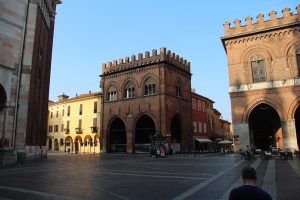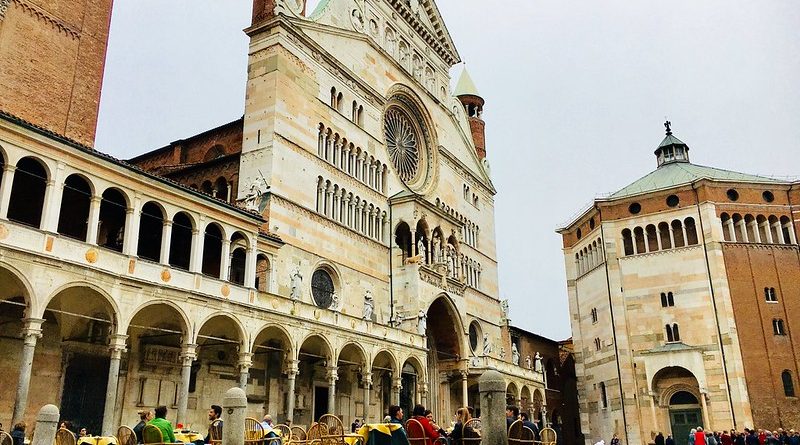Stradivarius and the history of violin making in Cremona
History Facts
 When you think of Venice and classical music, you think of Vivaldi – no doubt the greatest musical name to live here in the seventeenth century. There are plenty of concerts in the city to enjoy but if you’re feeling a bit more adventurous and want to find out a bit more about the history of the violin, take a day trip out to its birthplace in Cremona.Where: Cremona, near Venice, Northern Italy
When you think of Venice and classical music, you think of Vivaldi – no doubt the greatest musical name to live here in the seventeenth century. There are plenty of concerts in the city to enjoy but if you’re feeling a bit more adventurous and want to find out a bit more about the history of the violin, take a day trip out to its birthplace in Cremona.Where: Cremona, near Venice, Northern Italy
When: 16th – 18th century
History: The city where Amati invented the prototype modern violin in 1566 and Guarneri and Stadivari created a golden age of violin making
Go there for: An inspiration of music and architecture for fiddlers and Classical music lovers
About Cremona – the world’s Violin City
Cremona is Violin City, the most famous centre for the production of stringed instruments in the world. Cremona claims to be the birthplace of the violin and it has been its champion since 1566 when Andrea Amati invented the prototype modern violin from the viol – the Medieval fiddle. Demand across Europe initiated a golden age of violin making when Andrea’s grandson Nicolo Amati and his pupils Antonio Stradivari and Guiseppe Guarneri made the best violins in history.
Walking around Cremona you can easily pick out the elegant curves and scrolls on the brick and terracotta palaces that inspired the instrument’s Baroque form. A good place to start your string-driven tour is the Palazzo del Comune. Begun in 1206 as the seat of the Ghibelline party it now houses the most amazing collection of famous violins, including one of the most impressive and valuable violins in the world – the 1715 Golden Cremonese by one of the most famous craftsmen of Cremona, Antonio Stradivari.
Antonio Stradivari – Italy’s legendary luthier
Italy’s most famous luthier (maker of string instruments) produced over 1,100 violas, guitars, cellos, and violins. Around 600 of his instruments exist today. They are often calledStradivarius (Latin form of his surname), or abbreviated to Strad, and their stature is legendary.
Although he was well renowned as a violin maker during his lifetime, his instruments did not become popular until the beginning of the nineteenth century when the incisive and powerful yet clear tone was found to be ideal for either the intimacy of the chamber music salon or the vastness of an orchestral auditorium. Italian violinmakers of the seventeenth and eighteenth century had neighboring workshops in Cremona and most likely used nearby forests of the Southern Italian Alps as their source of spruce wood. Stradivarius instruments seemed to have been made of something special and for more than 250 years people have tried to discover his secret. According to the great violin virtuoso Nicolo Paganini, Antonio Stradivari used only “the wood of trees on which nightingales sang”. Even the wood he used was of unusual density owing to the freezing conditions of the seventeenth century “Little Ice Age” in which it grew.
When Stradivari died on December the 18th, 1737, he was interred in one of the small chapels in the Church of San Domenico, across the plaza from his home, in the plot he had purchased from the descendant of a family of minor Cremonese nobles. He had no qualms about buying a used grave to serve as his own and even appropriated its original owner’s tombstone. He simply had the previous family’s name and coat-of-arms partially effaced and his own name carved on it.
Today, 50 violin makers, or liutai as they are called, keep up the tradition using similar methods but all searching for that secret Strad ingredient. They are so mad about violins in Cremona that they’ve even set up an International School of Violin Making to keep the tradition alive.
MORE INFORMATION
Violin making in Cremona
A guide to violin making, museums and exhibitions in Cremona
Comune di Cremona
Piazza del Comune
8 26100 Cremona, Italy
Telephone: 00 39 0372 4071
If you go to Cremona you have to visit the comune in the main square, which houses one of the most impressive collections of 18th century violins in the world including Stradivari and the famous golden cremonese 1715.
Consorzio Liutai
Piazza Stradivari 1
26100 Cremona, Italy
Telephone: 00 39 0372463503
Just a few steps away from the cathedral is the Consorzio, where you can learn about contemporary cremonese violin-making and even try out a few of the instruments.
By Nicole Dudley




